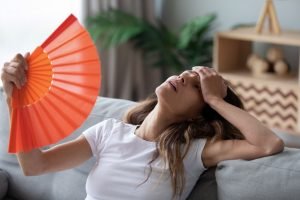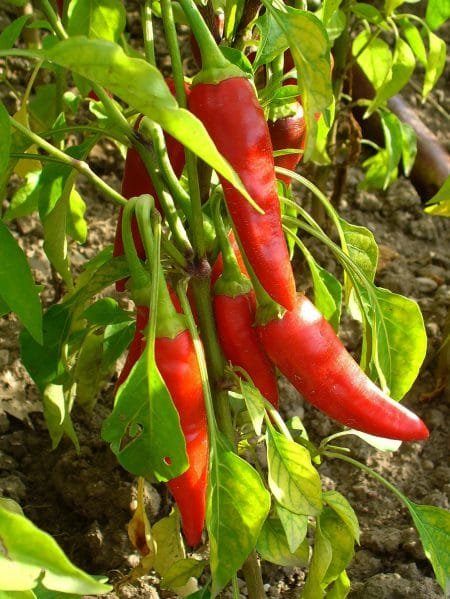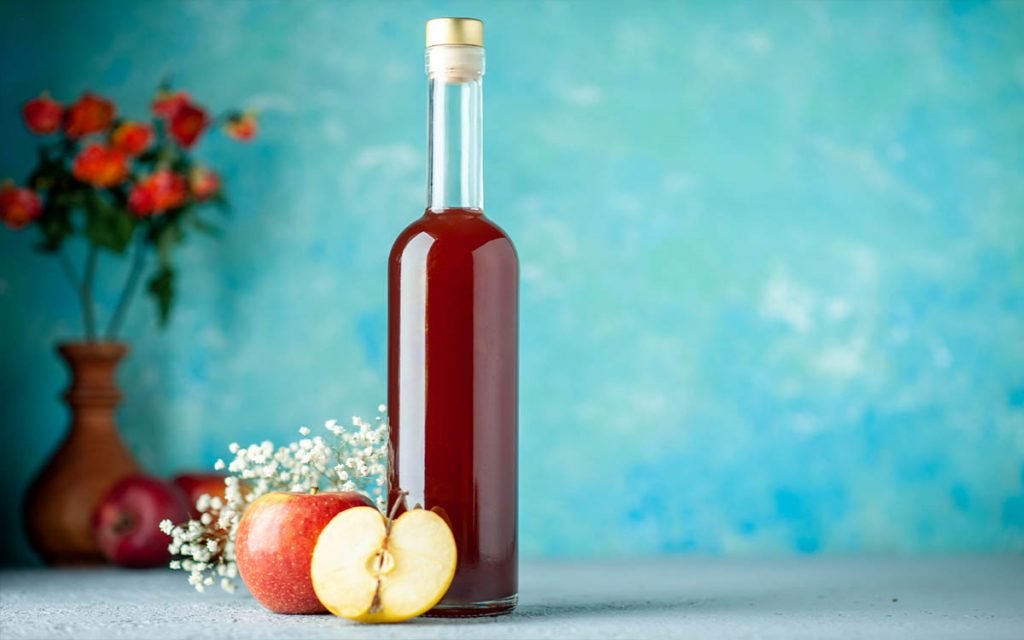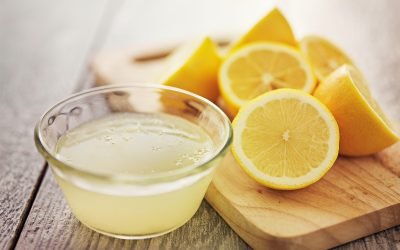Please note: This article is intended as an educational tool. It is not meant to replace the services of a health-care professional. Each person is unique and advised to seek the advice of their doctor to determine relevance in a given case. In cases of disease, other health concerns or pregnancy, check with your doctor before applying any information in this article.
Here in the Pacific Northwest, we just experienced a couple of very hot weeks. Heatwaves are not only concerning from a personal health standpoint, but as my wife and I live surrounded by forest, we are well aware that wildfire risk has greatly increased due to climate change. This summer the heat has been searing, and forest fires are raging all across North America, Europe and other parts of the world.
Heatwaves are occurring more often than they used to across the United States, with their frequency increasing from an average of two heat waves per year during the 1960s to six per year during the 2010s. Also, the average heat wave in major U.S. urban areas now last for approximately four days; a day longer than the average heat wave in the 1960s. The average heat wave season is 47 days longer now than it was in the 1960s.1
Increasing concentrations of greenhouse gases lead to an increase of both average and extreme temperatures. This is expected to lead to an increase in illness and fatalities from heat, particularly among children, the elderly, and the economically disadvantaged who cannot afford air conditioning or fans. Days that are hotter than the average seasonal temperature in the summer compromise the body’s ability to regulate its temperature, thus encouraging health complications. Loss of internal temperature- control can result in a cascade of heat-related illnesses, including heat cramps, heat exhaustion, heatstroke, and hyperthermia. Extreme heat can also worsen chronic conditions such as cardiovascular disease, respiratory disease, cerebrovascular disease, and diabetes-related conditions. Prolonged exposure to high temperatures has been associated with increased hospital admissions for cardiovascular, kidney, and respiratory disorders.2
Given this, it is important to have a strategy for staying healthy during very hot weather, and of how to respond to heat exhaustion and heat stroke. In this article, I will discuss specific measures that can be taken to keep one from being overwhelmed by the exigencies of hot weather. This is Part I of a 2-part article. In this first part, I will describe my dietary pattern and additionally discuss the value of cayenne and unfiltered apple cider vinegar. Part II will focus upon essential oils, gemstone essences, cool water hydrotherapies, cell salts and molecular hydrogen.
Heat Exhaustion

Heat exhaustion occurs when the body overheats and cannot cool itself down. While this sometimes occurs from excessive exercise, it most commonly is a consequence of prolonged hot, humid weather.
Heat exhaustion, whether from intense physical activity or hot weather, is due in part to dehydration due to loss of fluids via perspiration accompanied by a failure to replace those fluids.
Symptoms of heat exhaustion can include dizziness, headache, nausea, muscle cramps and others. Treatment includes removal from the heat, rest and fluids. Untreated, heat exhaustion can lead to heatstroke, which can be a life-threatening condition.
Risk factors of heat exhaustion include: age (older people and young children under 4 years of age cannot regulate their body temperatures as effectively as others and are more prone to dehydration); overweight (overweight people are at higher risk for heat exhaustion); chronic illness (various chronic illnesses such as diabetes and heart disease increase the risk of heat exhaustion); alcohol use (excessive alcohol use encourages dehydration and makes it difficult for the control its temperature); excessive exertion in a hot, humid environment; certain medications: some prescription drugs have side effects such as vomiting or diarrhea that can encourage dehydration, and thus, lead to heat exhaustion; diuretics reduce the amount of fluid in your body and can cause dehydration; chemotherapy drugs and beta blockers (to lower blood pressure and slow heart rate) also increase the risk of heat illness;
Symptoms of heat exhaustion may appear suddenly or develop gradually. A red rash (heat rash) or heat cramps (muscle; usually of the arms of legs) are often early warning signs.
Heat exhaustion symptoms may include: dizziness; light-headedness; blurred vision; headache; fever (usually over 100oF/38oC); weak, rapid heartbeat; low blood pressure upon rising from a seated position (i.e., orthostatic hypotension); rapid, shallow breathing; fatigue; weakness; fainting; nausea and/or vomiting; excessive sweating, yet cold, clammy skin; swollen ankles or swelling of the feet and hands (i.e., heat edema).
Heat exhaustion is largely the product of dehydration. In turn, dehydration follows from excessive loss of fluids and electrolytes.
The immediate measures that should be taken in response to heat exhaustion include:
1) stop physical activity; sit in a reclining position or lie down and allow the body to rest and recover.
2) cooling procedures are important: rest in a cool place; take a cool shower (in Part II of this article, I will discuss the progressive cool shower technique); apply a cold compress to the forehead, back of the neck and perhaps the armpit and groin lymph nodes region);
3) Take small sips of water with electrolytes added. Unsweetened coconut water is a rich source of electrolytes. Coconut water contains more potassium per serving than bananas: approximately 600 milligrams per cup of coconut waters : 362 milligrams in a medium-sized banana. Coconut water also contains over 250 mg. of sodium, 58 mg. of calcium and 60 mg. of magnesium per cup.
A drink consisting of 1 part cool (but not cold or iced) water : 1 part unsweetened coconut water may prove of good service. Continue this water-drinking for 1 hour. Then continue to have regular drinks of water + unsweetened coconut water for the rest of the day.
4) Avoid alcohol and caffeinated drinks.
5) Seek professional help if required. If symptoms don’t improve after an hour of rest and fluid and electrolytes intake, call your doctor.
Prevention of Heat Exhaustion
Of course, as always, prevention is far superior to successful cure. Accordingly, during hot weather: restrict physical activities; wear loose clothing of a natural, breathable material such as cotton or hemp; rest whenever fatigued; stay well-hydrated; be sure to have a generous intake of essential electrolytes.
A unique suggestion is: practice Vital Chi Skin-Brushing daily during hot weather.

My Vital Chi Skin-Brushing System excites physiological activities, including lymph and blood circulation, sweat and oil glands and skin pore function. The impetus of mechanical compression and reflex nerve responses related to skin-brushing supports venous and lymphatic drainage of the skin. These same mechanical effects directly enhance capillary circulation as evidenced by the feeling of a healthy warmth and the skin flush that skin-brushing imparts. By decreasing intercellular congestion, skin-brushing facilitates greater diffusion of nutrients, oxygen and fresh lymph from the capillaries into the intercellular spaces.
Decreased sweat and oil gland function is a concomitant of aging. The oil secreted by the sebaceous glands coats the surface of the skin and prevents excessive water-loss through evaporation. Oil does not moisturize the skin, but rather, acts as a sealant that helps retain the skin’s natural fluid content. Skin-brushing stimulates both the sweat and oil glands and, in this way, contributes to the restoration of moist, supple skin. It also strengthens the skin pores through which the skin is moisturized and cleansed, and oxygen and CO2 are exchanged. Aging and devitalization of the skin often results in pore-enlargement and flaccidity due to loss of skin tone.
The positive impact that Vital Chi Skin-Brushing exerts upon blood circulation, the sweat glands and the skin pores makes it a very valuable tool to consider (most especially for older adults) when challenged by the exigencies of very hot weather.
During hot weather, it is best to follow a Vital Chi Skin-Brushing session with the Progressive Cool Shower (to be discussed in important detail in Part II of this article).
Hot Weather Dietary Suggestions
Clearly, during hot weather, it is best to pursue a dietary pattern that will not foster overheating and dehydration. In this reference, a fundamental dietary principle of my Natural Health Science System is: Eat a diet dominated by fresh, whole, high water-content foods. A high water-content, alkaline diet consists predominantly of fresh fruits and vegetables with smaller amounts of whole grains, legumes, nuts, seeds, brown eggs, fowl and fish.
Ideally, every meal should emphasize water-rich foods. Fresh fruits and vegetables are rich in vitamins, minerals, fiber and organic water. When possible, use organically grown fruits and vegetables which, having been grown without pesticides, are more nutritious and do not contribute synthetic chemicals to the body’s toxic load. Remember, the body is two-thirds water, and our fluid organization must be constantly nurtured and replenished.
High-protein foods such as meat, eggs, fish and fowl leave an acid-mineral residue when they are metabolized. On the other hand, fruits and vegetables leave an alkaline-mineral residue. Since the blood is an alkaline fluid, the body reacts to acids by neutralizing them with alkaline elements such as calcium, magnesium or potassium. When your diet features an excess of acid-forming foods, the blood draws continually upon the body’s reserves of alkaline buffer elements.
Even subtle shifts in blood pH (the measure of relative acidity or alkalinity) have a strong impact upon cellular function. The less alkaline the blood, the faster the cells wear down and must be replaced. When cells are longer-lived there is a slower turnover in cellular proteins and, accordingly, a reduced need for dietary protein. Thus, when the diet is predominated by alkaline foods, we can live healthfully on much smaller amounts of protein.
The symptoms of decreased alkalinity include: fatigue; nervousness; irritability; headache; loss of appetite; acid indigestion. The health, strength and youth of the body are dependent upon a requisite degree of alkalinity. Whether our bodily cells are replaced by normal or diseased ones depends, in part, upon the normal alkalinity of blood pH. Excess acidity inhibits growth in the young and erodes the structure of the adult. Death from “natural causes” is often the end-point of a progressive state of acid saturation of the tissues.
The pH of a solution is a measure of its acid or alkaline nature. The pH is inversely proportional to the temperature of the solution. When the temperature of a solution rises, the molecular vibrations in the solution rise resulting in the ionization and formation of free hydrogen (H+) ions (as opposed to stable molecular hydrogen H2). More H+ ions lead to a more acidic state. Owing to temperature changes, the pH value of the solution changes. Thus, pH decreases (i.e., becomes more acid) as temperature increases. This happens due to a decreased tendency for hydrogen bond formation as temperature rises. Accordingly, while it is advisable to always pursue a diet dominated by alkaline-forming foods, it is far more so during hot weather.
My Personal Dietary Pattern
I actually use the same dietary pattern throughout the year. However, as this pattern happens to be well-suited for hot, summer weather, I am describing it here as a general frame of reference.
Note: My wife and I have been consuming an entirely organic foods diet for many years. Whenever possible, opt for certified organic fruits, vegetables, nut, seeds, grains and legumes.
Upon Arising:
Cool Water Morning Draught (for a complete discussion see my article: The Morning Cool-Water G.I. Tract Reviver
I always begin my day drinking 24 oz. of cool (not cold) water.
Breakfast
Apple blended with seasonal fruit (e.g. blueberries, apricots, etc.).
I eat apples every day regardless of the season. I consider them to be a cornerstone of good health and longevity (more about this in a future article).
Served with: chia seeds, raw coconut flakes and either ground nuts (almonds or pecans or cashews or hazelnuts) or a mixture of ground sunflower seeds and hemp seeds.
Lunch
Raw vegetable salad dressed with olive oil and lemon juice or apple cider vinegar
or
Apples and/or seasonal fruit such as cherries or nectarines + a small serving of raw cacao.
Dinner
Blended raw vegetables (usually a mixture of spinach and other leafy greens, carrot, celery, several types of sprouts, onion, snow peas or green bean and raw sauerkraut pureed in a blender). Served with organic olive oil and sun-dried black botilla olives.
Occasionally, we accompany the raw vegetable puree with a serving of steamed asparagus or baked eggplant, seasoned lightly with raw sesame tahini and umeboshi paste or raw miso paste.
The vegetables are served with one of the following options in a rotation pattern:
1) Avocadoes + short-grain brown rice or kasha (toasted buckwheat) or toasted corn tortillas
We use soft-cooked grains because I find them to be more digestible and soothing to the gut. We cook: 1 cup brown rice : 4 cups water for 2 hours; 1 cup kasha : 3 cups water.
2) Soft-boiled eggs (brown eggs from free-range chickens), salad with toasted corn tortillas
We cook our eggs as follows: Cover with cold water and heat. As soon as they come to a roiling boil, turn the heat off but keep on the burner for 45 seconds. Then, immediately place the eggs in a bowl of cold water to stop any further cooking. If this is done properly, the whites of the eggs will be solid but the yolks will still be moist. Eggs prepared this way are easily digestible and have all of their nutritive content (protein, iron, vitamin B12 preserved, etc.). Never eat fried eggs.
3) Beluga lentils or baked tempeh and short-grain brown rice, or kasha (toasted buckwheat) or toasted corn tortillas
Cayenne
To read an in-depth discussion of the therapeutic value of cayenne, see my article: Cayenne’s Potential Value In COVID-19 Regarding Two of Its Destructive Effects

It may seem odd that I am discussing cayenne in relation to reducing the risks of prolonged hot weather. However, as noted previously, many of the health complications caused by extreme temperatures are related to its impact upon blood circulation.
Cayenne is one of the most important circulatory system medicines. Its major influence is upon the capillaries and other elements of the vascular system. According to the famous herbalist Dr. John Christopher in his book School of Natural Healing: “…this herb is a great food for the circulatory system in that it feeds the necessary elements into the cell structure of the arteries, veins and capillaries so that these regain the elasticity of youth again, and the blood pressure adjusts itself to normal [cayenne helps normalize both high- and low-blood pressure]…Cayenne regulates the flow of blood from the head to the feet so that it is equalized; it influences the heart immediately, then gradually extends its effects to the arteries, capillaries and nerves.”
It is this property of equalizing blood-flow in all parts of the body that makes cayenne invaluable in cases of incipient heatstroke. In heatstroke, the headache is commonly due to blood congestion. In severe cases, there may even be brain swelling. The body’s circulatory system contains a fixed amount of blood. If there is too much blood in one part of the body (i.e., hyperemia), then there is relative anemia in other parts. Cayenne can be used to move blood from an area of blood congestion to areas that have reduced blood flow. Thus, its value in treating heatstroke is in helping move blood away from the head, ameliorating headache and perhaps aiding in the reduction of swelling of brain tissues.
Cayenne can be quite mild or very strong, so dosages will vary. When necessary, I generally use about ½ tsp. of cayenne powder in 1 cup of water and take a 1 Tbsp. sip every few minutes to help relieve local blood congestion.
Cayenne: a member of the Solanaceae (or Nightshade) family has been used for its nutritional and medicinal properties for millenniums by the native peoples of the tropics to which it is indigenous. Despite its hot quality, cayenne exerts a powerful anti-inflammatory effect.
Capsaicin, the most important active constituent of cayenne, is a bitter substance which was first isolated and identified in the early 19th century. Capsaicin exerts the following effects: circulation-stimulating; antimicrobial; detoxification; gastroprotective (protects the stomach); thrombolytic (breaks down blood clots).
Cayenne is also a highly nutritive herb, containing relatively large amounts of vitamin C (369 milligrams per 3.5 oz.) and pro-vitamin A (21,600 I.U. per 3.5 oz.). It also contains significant amounts of potassium, iron and niacin.As a medicine,cayenne acts as a pure stimulant both locally and generally. In herbal medicine, a stimulant is defined as an agent which excites and increases nerve action, and thus, stimulates functional activity of the body’s various organs and systems.
Stimulants increase the force of blood circulation and tend to restore balanced circulation of blood to all parts of the body. When taken internally, cayenne effects circulatory change via influence of the nerve centers. Cayenne initiates a general increase in nerve and circulatory tone.
In extremely large doses, cayenne may be neurotoxic and cause life-threatening hypothermia, chronic gastritis, kidney damage, liver damage, dermatitis and blistering. The earlier herbal practitioners apparently viewed cayenne as being virtually incapable of causing harm regardless of the dosage administered. While it is true that cayenne, given the intensity of its action and the sensations it evokes, is a remarkably safe herb, it is also true that the body does not have a limitless tolerance for any substance, even water imbibed in excess.
Furthermore, the question of correct dosage varies among individuals. The earlier herbalists’ practice consisted of a much hardier breed of patient. The patient of their era was far less sedentary, was not subjected to the abominable modern diet, childhood vaccinations or a pattern of drug-suppression of benign acute symptoms, all of which, in concert, have degraded modern constitutional vitality. Hence, individuals in this era are far more sensitive and have a lower threshold of reaction than did their forebears. Therefore, the rule with cayenne is the same as with any other medicinal substance: The correct quantity to administer is just enough for the condition and not more. Nevertheless, one will find that despite its intensity, the individual threshold of tolerance regarding cayenne is often quite high.
Note: In cases of kidney disease, gastrointestinal ulceration or other serious disorders, it would be best to check with your doctor before using cayenne medicinally.
Given the strong enhancing effect cayenne exerts upon blood circulation, it is also a valuable herb in the treatment of fever. Enhancement of blood circulation is a prerequisite for stimulating the perspiration that can break a fever. In the West Indies, cayenne was once a leading medicine in the treatment of yellow fever and other tropical febrile illnesses, including typhoid fever and malaria. The West Indians combined the fresh pods of cayenne with the juice of sour oranges and raw sugar and drank it freely during fever. Cayenne is particularly indicated for prostrating fevers, especially in persons whose powers of reaction are deficient and difficult to arouse.
The indications for cayenne include marked nervous debility, lack of nerve and circulatory tone, deficiency of functional force, lethargy, digestive weakness and a tendency toward weak circulation and capillary stasis (a common symptom of this being swollen feet and ankles). Also, the individual’s fluid organization is somewhat depleted in this case and he may complain of dryness of the mouth. Cayenne is also a first-rate gargle ingredient for sore throat, tonsillitis, laryngitis and diphtheria, or any throat disorder caused by an enfeebled and relaxed condition of the pharynx and post-nasal mucosa.
By enhancing circulatory potential, cayenne supports the ability to perspire. Many older, debilitated individuals, and even younger, chillier individuals, whose circulatory powers have been greatly diminished by age, disease, suppressive medications, sedentary lifestyle, poor dietary habits, prolonged emotional stress, etc. do not readily perspire. The perspiration function is one of the primary mechanisms for relieving the body of heat stress.
Importantly, one of the key differences between heat exhaustion and heat stroke is that, while the former is associated with heaving sweating, someone presenting with the latter has dry, often reddened skin, and no perspiration.
Cayenne can be added to vegetable salads, salad dressings, summer cold soups (e.g. raw corn soup), spreads (e.g., mix together raw sesame butter and umeboshi plum paste), etc. For more acute therapeutic purposes, I generally use about ½ tsp. of cayenne powder in 1 cup of water and take a 1 Tbsp. sip every few minutes to help relieve local blood congestion. Cayenne can be quite mild or very strong, so begin carefully as dosages will vary.
Apple Cider Vinegar
Apple cider vinegar (ACV), produced through the fermentation of fresh apple cider is a rich source of electrolyte minerals (particularly potassium and magnesium), vitamins, enzymes and amino acids. Apple cider vinegar, a potassium-rich detoxifier is a potent and versatile healing substance which may prove of value when taken internally in the treatment of a wide range of internal conditions, including: fatigue; headache; diabetes; obesity; digestive weakness; heart weakness; blood pressure abnormality.

Accordingly, it may prove to be even more therapeutically valuable during very hot weather. Heat exhaustion symptoms include headache and heart and blood-pressure abnormalities. As noted above, both diabetes and heart disease render an individual more prone to heat exhaustion. Additionally, oppressive heat encourages digestive sluggishness.
ACV has been used medicinally for thousands of years for a wide variety of purposes, including liver detoxification, blood purification, lymphatic cleansing and boosting of immunity. In ancient Greece, Hippocrates prescribed it mixed with a small amount of raw honey to help treat coughs and colds.
Malic acid makes up 90% of organic acids found in apples, making it one of the best natural sources for the compound. This chemical compound plays a critical role in the body because it is involved in the Krebs cycle – a process through which the body produces energy, helping to explain why malic acid improves exercise performance.
Unfiltered apple cider vinegar contains the malic acid (1 part malic acid : 7 parts acetic acid) that persists following the fermentation of apple cider. Acetic acid has also been found to have therapeutic potential. In addition to being a potent bactericide (kills bacteria)3, it is also thought to reduce blood sugar levels4, inflammation and blood pressure5, and to promote weight loss6. The chemical formulas for malic acid and acetic acid are respectively C4H6O5 and C2H4O2, and so contain oxygen (O). When these acids break down, they release oxygen into the system.
Also, although apple cider vinegar ostensibly has an acidic pH, its component alkaline minerals exert a counterbalancing alkalizing effect in the body. There is debate as to whether unfiltered apple cider vinegar ultimately exerts an acidic or alkalizing effect in the body. However, when used in judicious amounts, its potential benefits outweigh any impact its acidity may have. Be sure to dilute apple cider vinegar in a sufficient amount of water.
Acetic acid combines with Coenzyme A (a coenzyme derived from the B-vitamin pantothenic acid, important in respiration and many other biochemical reactions) to form acetyl-CoA. The acetyl-CoA then enters the Krebs Cycle (the basic energy producing mechanism within body cells). Within the Krebs Cycle acetic acid is ultimately broken down into carbon dioxide and water.
I personally use 2 tsp. of ACV stirred into 8 oz. of water twice daily just before breakfast and dinner. Using it this way, ACV aids digestion and helps prevent gastroesophageal reflux (heartburn).
Apple cider vinegar is an excellent après-soleil (“after sun”) application. One should always sunbathe for brief periods of time before 9 a.m. and after 3 p.m. when the sun’s rays are less powerful in order to avoid sunburn—this is a predisposing factor in skin cancer. However, if you have gone to the beach and overdone and the skin is reddened and painful, sponge the skin with apple cider vinegar and let it dry on the skin. This will help relieve the pain and prevent blistering and peeling.
Good quality apple cider vinegar is made from organically grown apples and aged in wooden barrels. It should be pungent and moderately dark brown, and when held up to the light, you should see a cob-web like formation called the “mother” suspended in the liquid. The presence of the “mother” is evidence of the vinegar’s naturalness. One should only use whole, unfiltered, apple cider vinegar. Clear commercial-grade apple cider vinegar, which favors “eye appeal” over nutrition, has had the “mother” removed via steam distillation. Distilling (a high heat process that turns the apple cider vinegar to steam) not only destroys all the vinegar’s natural enzymes and toxin-neutralizing malic acid, but also eliminates most of its health-building minerals and vitamin content. Purchase your apple cider vinegar from a health food store. It should be unfiltered, opaque rather than clear, contain the “mother” and be produced from organically-grown apples. Bragg’s Apple Cider Vinegar is an excellent brand.
You can find more practical information about ACV in my article Apple Cider Vinegar for Healthy Skin and Hair.
Part II of this article will focus upon essential oils, gemstone essences, cool water hydrotherapies, cell salts and molecular hydrogen.
References
- 1.Wuebbles DJ, Fahey DW, et al., eds. Climate Science Special Report: Fourth National Climate Assessment, Volume I. U.S. Global Change Research Program; 2017. doi:10.7930/j0j964j6
- 2.Sarofim MC, Saha S, Hawkins MD, et al. Ch. 2: Temperature-Related Death and Illness. The Impacts of Climate Change on Human Health in the United States: A Scientific Assessment. U.S. Global Change Research Program; 2016. doi:10.7930/j0mg7mdx
- 3.Cortesia C, Vilchèze C, Bernut A, et al. Acetic Acid, the Active Component of Vinegar, Is an Effective Tuberculocidal Disinfectant. Weiss LM, ed. mBio. Published online May 2014. doi:10.1128/mbio.00013-14
- 4.Liljeberg H, Björck I. Delayed gastric emptying rate may explain improved glycaemia in healthy subjects to a starchy meal with added vinegar. Eur J Clin Nutr. Published online May 1, 1998:368-371. doi:10.1038/sj.ejcn.1600572
- 5.Kondo S, Tayama K, Tsukamoto Y, Ikeda K, Yamori Y. Antihypertensive effects of acetic acid and vinegar on spontaneously hypertensive rats. Biosci Biotechnol Biochem. 2001;65(12):2690-2694. doi:10.1271/bbb.65.2690
- 6.Beh B, Mohamad N, Yeap S, et al. Anti-obesity and anti-inflammatory effects of synthetic acetic acid vinegar and Nipa vinegar on high-fat-diet-induced obese mice. Sci Rep. 2017;7(1):6664. doi:10.1038/s41598-017-06235-7






